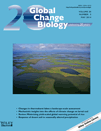Climate change and conservation of forest genetic resources
Climate change and forests have again been vividly discussed topics around the world before and during the 20th Conference of Parties to the UN Framework Convention on Climate Change held in Lima, Peru. While the potential forests offer for capturing carbon and mitigating climate change is widely recognized, the crucial role of genetic diversity in adapting forests to climate change is, unfortunately, still poorly acknowledged by policymakers and experts involved in negotiating the climate deal.
Climate change and forests have again been vividly discussed topics around the world before and during the 20th Conference of Parties to the UN Framework Convention to Climate Change held in Lima, Peru. While the potential forests offer for capturing carbon and mitigating climate change is widely recognized, the crucial role of genetic diversity in adapting forests to climate change is, unfortunately, still poorly acknowledged by policymakers and experts involved in negotiating the climate deal.
Climate change is not only altering how forests should be used but also how they should be conserved. In Europe, the continent-wide network of the genetic conservation units of forest trees is an example of a dynamic and large-scale conservation approach, which is necessary for adapting conservation systems to climate change. These units are natural or artificially established tree populations that are specifically managed, among other possible objectives, for maintaining evolutionary processes and adaptive potential. Currently, this network includes a total of 3165 units in 34 countries. A new study* carried out in the context of EUFORGEN analyses how climate change might impact the pan-European network of these units.
The study estimates that, by 2100, 33-65 % of the conservation units of six major European tree species (silver fir, Norway spruce, Scots pine, European beech, sessile oak and pedunculate oak) will be at the limit or outside the species’ current climatic niche. The study also assessed the velocity of climate change at the location of each unit based on the environmental heterogeneity of the landscape around the units. The results are in line with the findings of similar studies in different parts of the world and indicate that the velocity of climate change is higher in lowlands as compared to mountainous areas. In Europe, countries like Finland, Latvia, Lithuania and Poland, for example, will experience higher velocity of climate change than Austria, Slovakia, Slovenia and Turkey, to name a few countries in mountainous areas. Subsequently, tree species in mountainous habitats, such as silver fir, European larch and Swiss stone pine, are expected to be less affected by climate change as compared to tree species which typically grow in lowlands.
The team of scientists which carried out the study recommends intensifying the monitoring of the most affected units and implementing complementary conservation measures for tree populations within these units, such as collecting seeds for establishing static ex situ collections or dynamic ex situ units in areas less affected by climate change. The results of the study are also useful for incorporating climate change considerations into the pan-European genetic conservation strategy for forest trees, recently developed by EUFORGEN, and for making the network of the genetic conservation units more resilient to climate change.
* Schueler, S., Falk, W., Koskela, J., Lefèvre, F., Bozzano, M., Hubert, J., Kraigher, H., Longauer, R. and Olrik, D.C. 2014.<link http: onlinelibrary.wiley.com doi gcb.12476 abstract _blank external-link-new-window external link in new> Vulnerability of dynamic genetic conservation units of forest trees in Europe to climate change. Global Change Biology 20 (5): 1498–1511.








